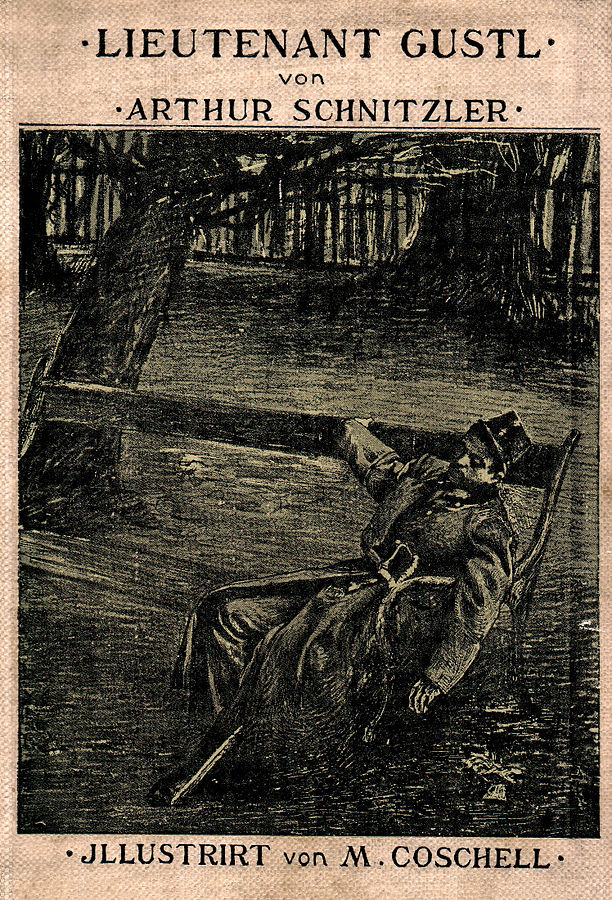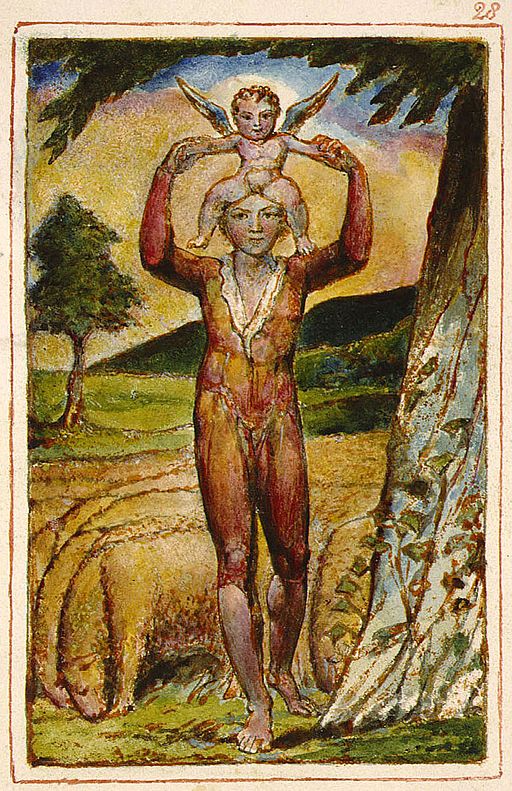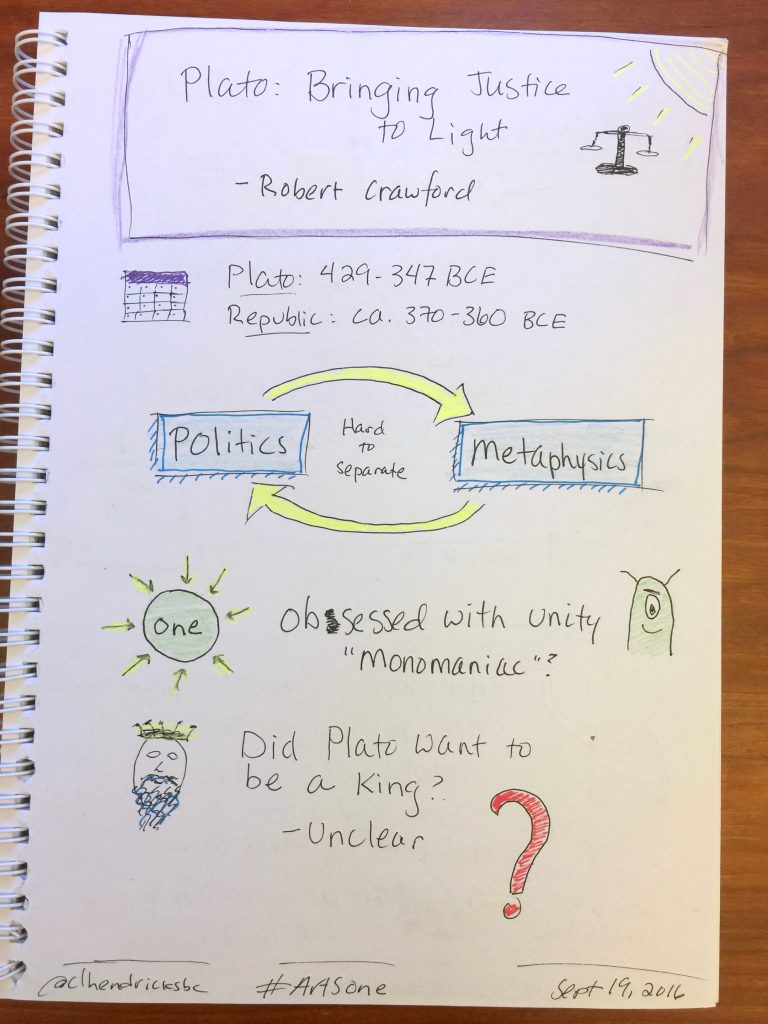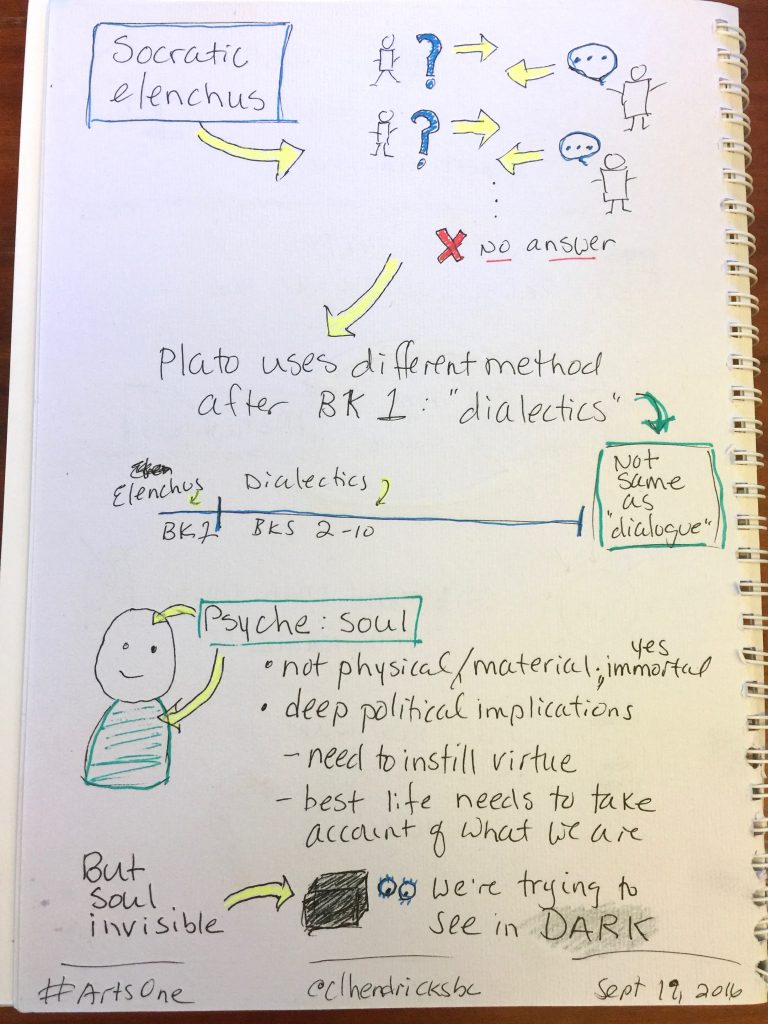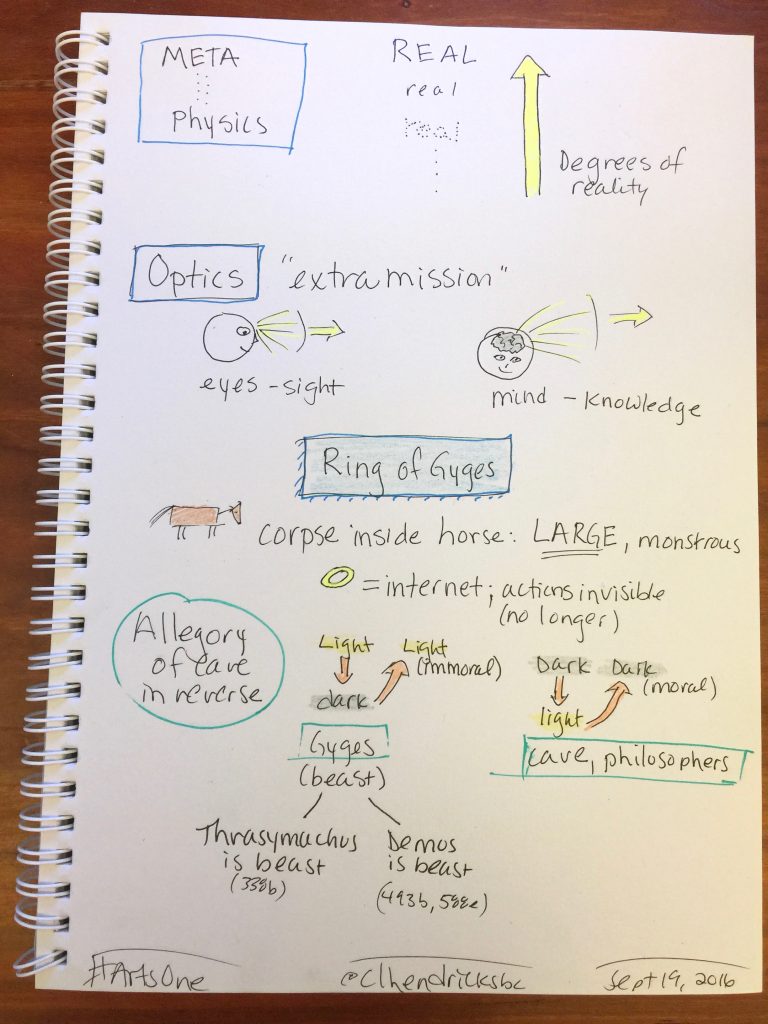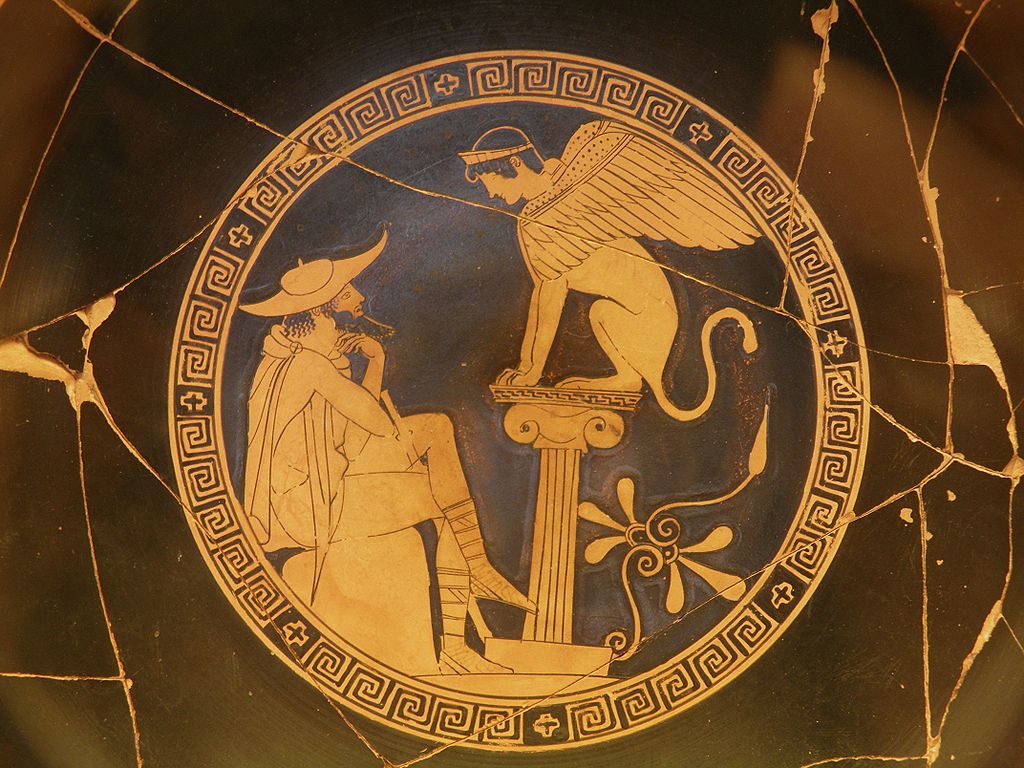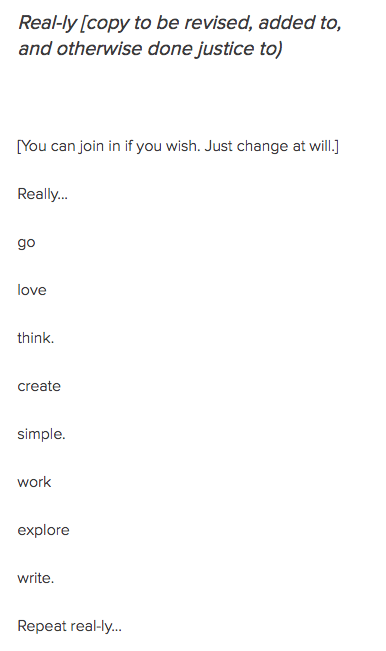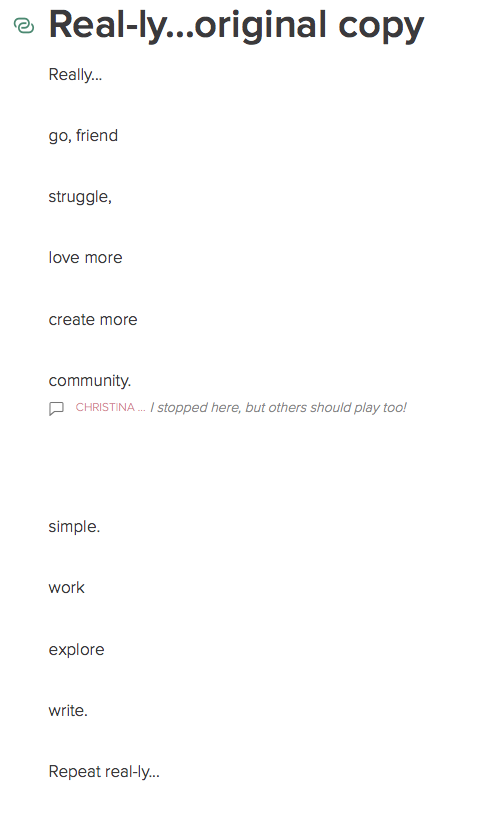Another post on readings we’re doing in Arts One: this week we discussed a couple of works by Charlotte Perkins Gilman: Our Androcentric Culture and “The Yellow Wall-Paper.” I gave a lecture on these works this week, and you can see the slides here if you’re interested:
I’m using this post to point out something I didn’t have time to talk about in class, either in lecture or in seminars, and see what others think.
A “phantasmagoria screen”
There are multiple ways to interpret the wallpaper itself; I found the one by Carol Margaret Davison in “Haunted house/Haunted Heroine: Female Gothic Closets in ‘The Yellow Wallpaper’” (Women’s Studies 33.1 (2004): 47-75) very intriguing:
A … detailed portrait of the narrator’s conspiratorial fears and suspicions is revealed in the yellow wallpaper that decorates her nursery bedroom…. Indeed, it becomes a type of phantasmagoria screen onto which is projected her sense of her situation. (60)
I like this idea of the wallpaper being a kind of screen that she projects her own sense of self onto, that she externalizes it onto, as if through projection of a film. It emphasizes the visual aspect of the story and the wallpaper.
Going off of this idea, I was thinking that as the story goes along, the narrator could be bringing her sense of self and her situation more and more into consciousness, to the point where she finally merges with the woman in the wallpaper because really, that was her all along. She had projected her sense of self outwards, and finally takes it back inwards, so to speak.
Towards the beginning of the story, she just finds the wallpaper confusing, uncertain, contradictory; then she dedicates herself to studying it (650) and slowly it starts to make sense to her–she starts to get some clarity about it. At first (650) she thinks she sees a kind of “formless figure” behind the main pattern, and then on p. 652 she starts to become certain that the figure is that of a woman. Laterthe narrator realizes that the woman is trying to shake the pattern to get out (654). I don’t think it’s only because I’ve lectured on Freud numerous times for Arts One that this reminds me of Freud and repression: one could say the narrator starts to become more and more aware of repressed thoughts and feelings as she begins to recognize them as those of a woman who is inside the wallpaper.
This could connect with her desire to have no one understand what is in the paper but herself, to keep it to herself; after she caught Jennie looking at the wallpaper the narrator says, ““I know she was studying that pattern, and I am determined that nobody shall find it out but myself!” (653). On a Freudian reading of the woman in the wallpaper representing repressed content, this is not something that the narrator would want other people to know. Of course, there’s a flaw here: if it were truly repressed content, then the narrator herself wouldn’t want to know it; repression is, by definition, a process of the mind keeping things from consciousness that some part of oneself doesn’t want to have surface. Still, even if the repression theory doesn’t fit exactly, the idea that the narrator is bringing to consciousness aspects of herself that she didn’t really face before could still work.
Going round and round
As I started thinking about this idea of coming to consciousness of herself, something else struck me. There are suggestions in the story that the narrator has actually been doing the creeping she says the woman does, during the day, inside the room. On p. 654 she points out that there is a strange mark on the wall: “It goes behind every piece of furniture, except the bed, a long, straight, even smooch, as if it had been rubbed over and over.” Who did the “smooch”? Possibly the room has held other women in similar situations, or the children who used to be in the nursery did it. But there’s also the fact that at the end of the story the narrator is going around and around in the smooch herself, her shoulder perfectly fitting into it. It’s possible she had been doing that for quite awhile before she came to consciousness of doing it. This would explain why Jennie says the yellow gets onto the narrator’s clothes (653); but it wouldn’t explain why Jennie says it’s also on John’s clothes. The narrator sees the smooch earlier in the story, but doesn’t realize that it was she herself that made it through going round and round the room.
The thing that really brought this idea out for me had to do with teeth marks on the bed, though. On p. 655 the narrator points out: “this bedstead is fairly gnawed!” And then shortly after that she says she got so frustrated at not being able to move the bed “[she] bit off a little piece at one corner –but it hurt her teeth” (655). She is clearly gnawing on the bedstead herself, and had she been doing that for awhile without realizing it?
So it could be that as the narrator comes to consciousness of her own thoughts and feelings, and her situation as a woman trapped behind “bars” like the woman in the wallpaper (the pattern on the wallpaper becomes bars in moonlight (653)), she also brings to consciousness what she has been doing during the day while John is away and Jennie thinks she is sleeping. Even while the narrator herself thinks she is sleeping (she says on the top of 654 that she sleeps a lot during the day).
At least, I think this is a plausible interpretation!
Day and night
One other thing that might be related here, if only indirectly: there are differences in what happens between day and night, including in what the wallpaper is like. By night the pattern becomes bars, as noted above, and the woman shakes the pattern to try to get out. In the day, in the pattern there is “a lack of sequence, a defiance of law, that is a constant irritant to a normal mind” (653). During the day the pattern is “like a bad dream.” And by day the woman is quiet (652), only moving around and shaking the pattern at night.
If we take a Freudian view (again), then the idea of unconscious material coming out in dreams could fit here: the woman moves, the woman is clear to the narrator at night, insofar as that is when one is usually asleep and dreaming. And perhaps the narrator is actually asleep and dreaming at that time, if during the day she is moving around and around as suggested above. But this interpretation would suggest that the narrator isn’t actually hallucinating but dreaming, and I’m not sure I want to go there. It diminishes the severity of what seems like a very real illness.
Here’s a perplexing thing to me about the day/night discrepancy: the woman in the wallpaper gets out during the day (654), but at night is stuck behind the bars. The narrator sees her creeping out of the windows in the daytime, and at the end the narrator says that she expects that at night she will have to back into the wallpaper (unless she tears it all off). I expect there is something going on here with space: something about seeing the woman outside the bars of the windows of the room during the day and inside the bars of the wallpaper at night, but I haven’t gotten very far with this. I think there are a lot of interesting things one might do with space in this story: why it should focus on wallpaper inside the walls of a room, with a lot of discussion of what happens outside the windows and the narrator saying she can see the woman both inside the bars of the wallpaper (at night) and outside the windows and their bars (during the day). I’d love to see an essay on this if anyone feels so inclined!
So, I’m curious if you have any thoughts about any of what I’ve suggested here…. Feel free to argue against my interpretation; it may not work entirely!
